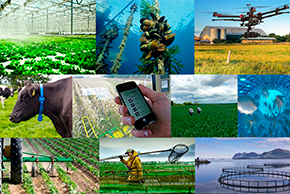Special Issue--Key Technologies and Equipment for Smart Orchard
HAN Leng, HE Xiongkui, WANG Changling, LIU Yajia, SONG Jianli, QI Peng, LIU Limin, LI Tian, ZHENG Yi, LIN Guihai, ZHOU Zhan, HUANG Kang, WANG Zhong, ZHA Hainie, ZHANG Guoshan, ZHOU Guotao, MA Yong, FU Hao, NIE Hongyuan, ZENG Aijun, ZHANG Wei
Traditional orchard production is facing problems of labor shortage due to the aging, difficulties in the management of agricultural equipment and production materials, and low production efficiency which can be expected to be solved by building a smart orchard that integrates technologies of Internet of Things(IoT), big data, equipment intelligence, et al. In this study, based on the objectives of full mechanization and intelligent management, a smart orchard was built in Pinggu district, an important peaches and pears fruit producing area of Beijing. The orchard covers an aera of more than 30 hm2 in Xiying village, Yukou town. In the orchard, more than 10 kinds of information acquisition sensors for pests, diseases, water, fertilizers and medicines are applied, 28 kinds of agricultural machineries with intelligent technical support are equipped. The key technologies used include: intelligent information acquisition system, integrated water and fertilizer management system and intelligent pest management system. The intelligent operation equipment system includes: unmanned lawn mower, intelligent anti-freeze machine, trenching and fertilizer machine, automatic driving crawler, intelligent profiling variable sprayer, six-rotor branch-to-target drone, multi-functional picking platform and finishing and pruning machine, etc. At the same time, an intelligent management platform has been built in the smart orchard. The comparison results showed that, smart orchard production can reduce labor costs by more than 50%, save pesticide dosage by 30% ~ 40%, fertilizer dosage by 25% ~ 35%, irrigation water consumption by 60% ~ 70%, and comprehensive economic benefits increased by 32.5%. The popularization and application of smart orchards will further promote China's fruit production level and facilitate the development of smart agriculture in China.
